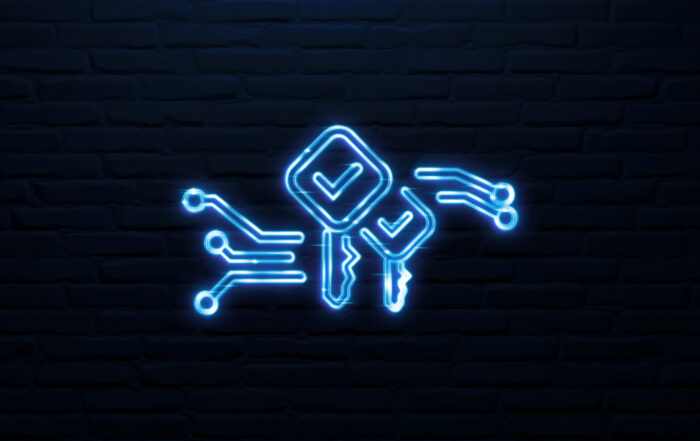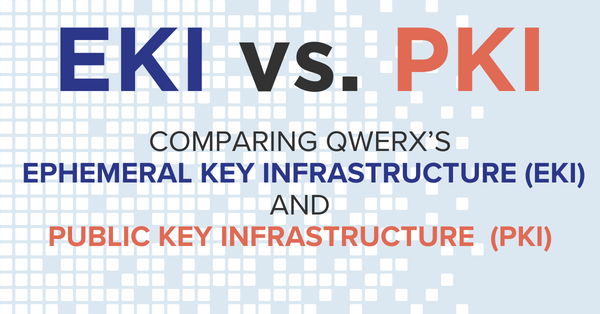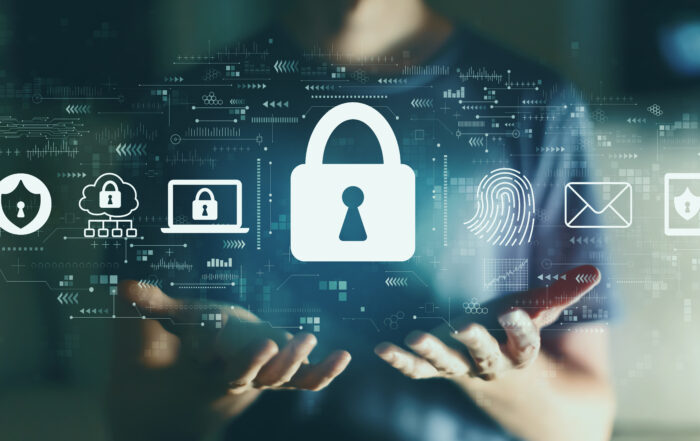What Is Public Key Infrastructure and How Is QWERX Better?

Public key infrastructure (PKI) underpins most of the protected networks today. PKI uses a combination of public and private keys to authenticate users and devices. Although it’s widely used, PKI can be grouped with other outdated cybersecurity tactics like multi-factor authentication, which presents only a layering of “solutions” and is often clunky. There needs to be a more secure solution that offers a frictionless experience for users. That’s where QWERX comes in.
Similar to how many organizations spend too much time and effort educating users against cyberattacks when the user should be removed from the cybersecurity equation altogether, any advancements in PKI are a fix to a system that needs to be disrupted entirely. Just because PKI has a proven set of standards to work with doesn’t mean that you should be satisfied with the status quo.
No doubt, PKI was a brilliant invention in its day.
However, PKI dates back to the 1970s, and while fashion trends are cyclical, technology techniques are not. PKI is on its way out for good. It’s time we part ways with PKI and progress to the next level of cybersecurity.
What Is PKI?
PKI is the architecture, organization, techniques, practices and procedures that collectively support the implementation and operation of a certificate-based public key cryptographic system. A framework is established to issue, maintain and revoke public key certificates. To grasp this larger concept, let’s dive deeper into how PKI works (or doesn’t work…but we’ll cover that soon).
The Process of PKI
So how does PKI work and where do private keys come into the equation? Public and private keys are two very large numbers that, through advanced mathematics, have a unique relationship whereby information encrypted with one number (key) can only be decrypted with the other number (key) and vice versa. To leverage this characteristic for security operations, once two numbers are mathematically generated, one is kept secret (private key) and the other is shared (public key). The holder of the private key can then authenticate themselves to another party who has the public key. Alternatively, a public key may be used by one party to send a confidential message to the holder of the corresponding private key.
3 Main Problems of Public Key Infrastructure
It sounds like a proven method, but users shouldn’t have to rely on secrecy when it comes to cybersecurity. Trust in an information system that is attached to the supposedly secret but static and easy-to-steal private key is problematic. Once that key is stolen, the trust that the system can operate securely disappears. This leads to the main problems inherent to PKI.
- PKI credentials are static and can be spoofed or stolen. Some keys are issued with no expiration date and don’t ever change. They are ripe targets for theft.
- Part of the PKI key exchange is a “private” key that a user must keep secret. PKI relies on error-prone humans to keep the private key “private.” Stealing a private key means an attacker can successfully impersonate a legitimate user.
- The asymmetric keys used in PKI create a significant network burden. They involve algorithms and complicated mathematical calculations — so only “smart” devices can be secured using PKI.
How QWERX Is Better: Replacing PKI With Ephemeral Keys
The good news: QWERX is here to replace vulnerable PKI.
- We exchange the static, cumbersome and vulnerable PKI with a revolutionary new technology built around ephemeral and dynamic keys.
- To begin with, our keys are based on completely chaotic, naturally occurring information. There is no algorithm involved to be broken with cryptanalysis, even with a quantum computer. Instead, the key is extracted from a lookup table which means no mathematical calculation is involved.
- Because there are no algorithms, there is no network burden.
- We also greatly reduce operational overhead on the system. The asymmetric key structure of PKI uses complex algorithms to generate pseudo-random keys. For this to work, network devices must have robust math co-processors to conduct the necessary calculations. In sharp contrast, QWERX extracts naturally occurring randomness, thereby eliminating the need for any algorithms or math co-processors in key generation. This is significant, as QWERX can now secure “thin” and “dumb” devices: the Internet of Things!
- A certificate authority issues instructions; keys are created from the instructions; a digital “handshake” authenticates the devices, and the keys disappear. Keys never transit the network and are never stored.
- QWERX credentials are ephemeral and may exist for only seconds or even tiny fractions of a second. The keys never exist anywhere or long enough to be stolen. Everything is done internally in the background, without human intervention.
- Keys are changed every few seconds, meaning that an attacker is always behind the curve. If a key is stolen, the system has already progressed ahead to a new key set and the thief is out of luck.
- Network latency is reduced with stronger, shorter keys.
It’s clear that QWERX’s superior solution creates a more efficient safeguard from attacks and the benefits are abundant and clear. When business owners can trust their cybersecurity without thinking much about it after implementation, it means clients can trust that business, and it’s an all-around advantageous situation: improved financials, employee and client satisfaction, and saved time.
Innovative Solutions From a Top Quantum Company
QWERX is the only encryption methodology that is quantum-proof so that when you integrate QWERX into your network, not only are you ridding your organization of outdated tactics like PKI, but you can be sure that your cybersecurity will continually rise to the next level. Be at the forefront of technology advances and contact us today to explore solutions for your organization.
Amanda Costello is a freelance journalist in Omaha, Nebraska. She has been published in AudioFile Magazine, The Omaha World Herald and CNN. You can view more of her work here.
Sources
Forbes - How Open-Source PKI Is Innovating Cybersecurity
National Institute of Standards and Technology (NIST) - PKI
National Institute of Standards and Technology (NIST) - Public and Private Key


